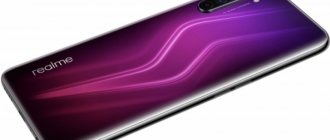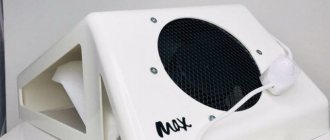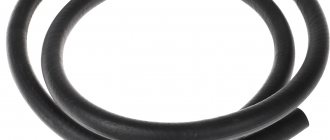Why did monitors with curved screens appear?
They were invented to provide viewers with improved picture quality. The main feature is achieving the effect of maximum immersion, which allows you to see familiar graphics in a new way. The first curved monitors were used primarily by gamers, but now they are also chosen for entertainment, watching modern movies, and just for work.
Monitors with a curved surface can use peripheral vision to a greater extent than flat monitors. The result is a so-called deep immersion effect. Sitting in front of the screen, the viewer seems to notice that the screen has boundaries. This effect is due to the fact that the sides are directed inward, so the distance from all the points that make up the image to the eyes remains the same. In addition, the radius of curvature is calculated by the developers to match the characteristics of human vision.
Price/benefit and our final word
As you've probably guessed, we're not fans of curved screens. For the most part, this technology creates more problems than benefits, and several advantages do not cover up the much larger number of objective disadvantages. In addition, such TVs are much more expensive than their flat-panel counterparts. Given the weaknesses of the curvature, we're not sure the price for these TVs is justified.
On the other hand, fans of manufacturers like Samsung, LG and Panasonic have little choice if they want to buy a flagship, since all the best models come with curved screens.
This factor, in part, creates a false impression among potential buyers that the best TVs are those with curved screens. They see that the manufacturer has announced the next flagship, and this flagship has a curved screen, and the consumer begins to think that curvature is cool.
To summarize, I would like to say that the curved screen does not do as much for the TV as we would like, not providing the user with what he expected when buying a curved TV. Yes, it slightly improves the viewing experience, but just a little, and only on large screens. But if you are fascinated by the appearance of such TVs, or just want to be trendy, then go ahead.
17 Sep 2021 S.Denchuk 34075
Share this post
Discussion: there is 1 comment
- Ivan:
10/04/2016 at 10:54Bent TVs certainly look cool, you can’t argue with that!
Answer
Pros and cons of a curved screen
Due to its design features, such a monitor has many advantages over a regular one. First of all, it is a wider view and an image that is free of distortion . Viewing content on a curved screen is compared to viewing in 3D, despite the fact that the image is two-dimensional. This effect occurs due to increased depth perception. One of the most important benefits of curved screens is the reduction of distortion. In this case, peripheral vision is also involved, and the perception of the picture becomes more natural.
The image quality across the entire monitor area remains high, color rendering and contrast do not deteriorate at the edges of the matrix, so it becomes easier to concentrate, which reduces eye strain by up to 60%. Defocus of vision occurs 4 times less often than when using a direct screen.
Curved screens also have disadvantages .
The main one is that all the listed advantages disappear if you are not directly in front of him and not in your comfort zone. Contrast and viewing angles deteriorate, and optical distortions appear. To prevent your eyes from getting tired, you need to sit no further than a certain distance from the screen. If we compare both types of monitors, curved ones are much more expensive, which is explained by the complexity of production.
Curved means big
The technology of curved panels was initially presented inextricably with large diagonals, which automatically classifies this type of TVs and monitors into the entertainment niche.
In fact, the idea of changing the radius of the canvas for demonstrations was born quite a long time ago: first in the theater business, and then safely migrated to cinema to increase the panorama. Nowadays, curved screens are widely used in cinemas and IMAX in particular. By the way, the example of IMAX when promoting the first models of curved TVs served as an excellent starting point for explaining the advantages. Following their curvature kinship, concave displays purport to offer the same immersive experience as a meticulously designed movie theater. In fact, the curved canvas in IMAX is almost the last thing responsible for the “presence effect”, since this shape allows you to solve a number of technical nuances related to the spread of light and the operation of the projector. In this case, immersion is achieved by the bending of the screen, coupled with its huge dimensions, which do not allow one to take in the entire width with one’s gaze.
Taking into account all of the above, immersion, similar to the well-known cinematic system, is also possible at home, but taking into account the fact that the TV will literally “hug” the viewer from all sides. You can achieve this by splurging on a model like the Samsung UE78JS9500, or in a more budget-friendly way - sit closer to a TV with a smaller diagonal.
At the same time, there are no exact recommendations for determining the optimal distance to the TV for “immersion”. Moreover, if when watching a spectacular film in good resolution, this method, coupled with a curved TV model, is partially justified, then broadcasting news in such a format risks resulting in a demonstration of panoramic figures of politicians right in the living room. Therefore, here it is better to think about ophthalmological ecology and the problem of perceiving a curved image with the eyes, discarding the idea of immersion.
In this regard, scientists have been studying the mechanisms of vision for several centuries. Thus, the concept of “goropter” was introduced - a certain conditional surface in the field of view in the shape of a circle, which includes a set of points in space. These points are projected onto identical points in the retinas of different eyes (corresponding points) and provide a complete image. If the conditions of correspondence are violated when different points are perceived (outside the horopter), then this can cause double images. In general, the topic is extremely interesting, difficult to understand, and is located somewhere at the intersection of the spheres of perception psychology and ophthalmology. However, these are the theories implied by manufacturers when it comes to the fact that the eyes perceive curved images better. In this case, the TV must be installed at such a distance that the viewing angle allows you to “capture” the entire picture from the screen. Only in this case, the side points located on the edges of the right and left sides of the screen, as well as the central point between them, will be equally distant from the viewer’s eyes. In this case, the only correct position for the viewer to use such science is exactly in the middle of the TV. However, more on that later.
As for the recommendations for the last example, there are many theories and methods for determining the optimal distance to the TV. Instructions from THX have long become authoritative and, importantly, extremely suitable for our case. There are a huge number of different calculators on the Internet for calculating distances, which are based on these recommendations. According to them, for comfortable viewing, the TV should occupy 36-40 degrees of viewing angle. At the same time, which is quite logical, the distance changes depending on the resolution of the model. For example, you will have to move about 3 meters away from 55-inch screens (optionally LG Ultra HD 55UC970V).
At the same time, there are prerequisites for the appearance on the market of curved monitors with much smaller diagonals. Thus, according to one study, various types of information are perceived better on a curved screen than on a flat one.
First, a prototype monitor model was developed, the radius of curvature of which can be changed using a simple design. Instead of modern displays, however, we had to limit ourselves to a sheet of paper with interchangeable images.
The result was a 23-inch “monitor” with an aspect ratio of 16:9, on which the subjects first chose the optimal radius of curvature of the canvas, and then, alternately with a flat screen configuration, tried to perceive different information. In the conclusions to the experiment, you can see a small table that shows the results of measuring the reading time of the same text on a flat and curved display. According to them, the curved shape allows you to quickly assimilate the material, which is quite possibly related to the above-described theory of the horopter line.
For what purposes is it better to choose a curved monitor, and for what purposes is it better to choose a regular flat one?
High-quality curved monitors can be purchased for both home and work use. They allow you to better organize your workspace, work more carefully and longer. For gamers and movie lovers, immerse yourself in a virtual world without having to wear virtual reality glasses. 16:9 and 21:9 aspect ratio screens can produce images with an effect similar to that of IMAX.
Monitors with improved performance are convenient for entertainment, work at home and in the office. For those who spend a lot of time sitting at the computer, a comfortable curved monitor will truly be the best solution.
Top 5 Curved Monitors for 2021
Xiaomi Mi Surface Display 34″
Xiaomi Mi Surface Display 34″ was released in October 2021. It has a resolution, 3000:1 contrast, 144 Hz refresh rate, 21:9 ratio, brightness: 300 cd/m², radius of curvature 1500R, GtG response time 4 ms. This monitor has a curved VA display from Samsung Display with a diagonal of 34” and uses AMD FreeSync synchronization technology.
Pros:
- no flickering;
- anti-glare coating;
- high performance;
- relatively low cost.
Minuses:
- you cannot turn off the LED on the bar;
- no instructions in Russian.
GIGABYTE G27FC 27″
This is a new curved gaming monitor with a 27″ diagonal, 165 Hz, 178° viewing angles, 250 cd/m2 brightness, 1 ms response time, 90% DCI-P3 color gamut and 120% sRGB gamut.
Pros:
- there are HDMI, DisplayPort, USB connectors;
- NVIDIA G-SYNC Compatible, Fleсker Free, AMD FreeSync Premium Low Blue Light functions;
- flexible color settings;
- strict frameless design;
- excellent value for money.
Minuses:
- You cannot rotate the monitor horizontally, you can only set the tilt angle and height.
AOC C24G2AE 24″
Characteristics of the curved AOC C24G2AE 24″: radius 1500R, diagonal 23.6″, resolution 1920 by 1080, ratio 16:9, brightness 250 cd/m², 3000:1 contrast, 1 ms response time, viewing angle 178°, frequency 165 Hz.
Pros:
- vision protection technology;
- AMD FreeSync Premium technology;
- HDMI, DisplayPort, VGA connector;
- frameless design;
- acoustic system, speaker power 2x2 W.
Minuses:
- no HDR support;
- no touch screen;
- no 90° rotation.
Samsung C24RG50FQI 23.5″
One of the best curved monitors for 2021 is the Samsung C24RG50FQI 23.5″. Characteristics: FullHD resolution, frequency 240 Hz, diagonal 24″, color depth 8 bits, radius 1500 mm, response time 4 ms, brightness 50 cd/m², 3000:1 contrast, 178° viewing angle, LCD matrix type VA, 16 :9 image format.
Pros:
- frameless design;
- AMD FreeSync, HDMI supported;
- no glare;
- compatible with NVIDIA G-SYNC technology;
- low output latency and fast matrix;
- VESA mounts;
- moderate weight of 4.6 kg.
Minuses:
- no sideways rotation or height change.
MSI Optix MAG27C 27″
Another worthy curved model of 2021 with the following characteristics: 27-inch diagonal, frequency 144 Hz, FullHD resolution, 16:9 format, matrix response 1 ms, brightness 250 cd/m², contrast 3000:1, viewing angle 178° , radius 1800R, 16.7 million colors.
Pros:
- DisplayPort, DVI, HDMI interfaces;
- frameless modern design;
- height, tilt and swivel adjustment;
- matte finish, no glare.
Minuses:
- There is no built-in tuner, speakers, or webcam, which will need to be purchased separately.
Is a curved monitor good for gaming?
When buying a monitor, especially for gaming, there are many important points that can play a role. Resolutions, refresh rates, responsiveness and, more recently, monitor curvature. It is this parameter that we will talk about today, whether a curved monitor is suitable for gaming. To do this, we will look at the pros and cons of such monitors.
Curved monitors first hit the market in 2014 and have since raised many questions, mainly about how much they actually change the user experience.
The main characteristic is the bend, which is measured in radius. As a standard, monitors can have a curve from 1800P to 3000 or 4000. Of course, flat screens do not have this characteristic. The smaller the radius, the greater the curvature of the screen. So 1800P is more curved than 4000P. But modern monitors most often have a curve of 1800R.
Source: thenextweb.com
Advantages
The main advantage of curved monitors is the immersion effect, which can only be rivaled by virtual reality helmets. Thanks to the bend, the image on the screen looks more realistic, simulating the real viewing angle of the human eye. This is why movie theater screens are curved.
Plus, most of these monitors have an ultra-wide screen and aspect ratio. This also has its advantages, such as an expanded viewing angle in games, which provides peripheral vision. And of course, more screen real estate, so you get multitasking capabilities.
Curved displays also create less strain on your eyes, given your comfortable settings. In any case, during a long gaming session your eyes will get much less tired. And it will be easier to switch between the real world and the screen.
It is desirable that a curved monitor be large in size; its advantages are noticeable mainly on a diagonal of 27 - 32 inches and above.
Minuses
Curved screen monitors are undeniably attractive. But the main disadvantage for many users will be the price. Although not by much, many of these monitors are more expensive than regular ones. The aspect ratio, in order for the difference to be truly noticeable, must be at least 21:9. Again, if you want to get a full experience from such a screen, then the computer must be powerful enough, as well as the video card. This is the only way you can truly use the benefits of the monitor to your advantage.
Source: RTINGS.com
Advantages of flat monitors over curved ones
While curved screens have their advantages, that doesn't mean flat screens are inferior in every way. A flat monitor fits much easier on a table and on a wall, plus it is much more convenient to adjust in height and tilt. If you have a lot of space to accommodate a large diagonal screen, then this would be an excellent choice. But if the room or table is small, it is better not to rush and use a flat screen. It also takes a while to get used to a curved monitor. Moreover, among flat screens you can also find ultra-wide ones. It’s easier to mount it on the wall and use it with a second one. But switching attention between a curved screen and a second flat one is much more difficult.
Who are curved screens suitable for?
A curved monitor is really good for gaming, not only for PC gaming, but also for gaming consoles. If you have to work with graphics along the way, then a curved screen will not be the most ideal solution, since visual distortion can negatively affect work. At the same time, when watching videos and playing games, the immersion effect creates a positive experience. Therefore, for gamers, a quality monitor with a curved display will be an excellent choice.
The LG 34UC79G-B monitor has a 34-inch diagonal, making it ideal for gaming. It has a resolution of 2560x1080 pixels. It also has a wide angle and a comfortable viewing angle of 178 degrees horizontally and vertically. The aspect ratio is 21:9, and the monitor’s excellent color reproduction and high contrast allow you to enjoy movies and games in high quality. In addition, the device works with HDTV, and the height can be adjusted using a stand.
Tips for choosing a curved monitor
To choose a good monitor, it will not be enough to simply study the technical specifications and look at bright pictures on the Internet. Experience in using or testing models of different classes and levels will help you decide on a model and not make a mistake in your choice.
It is believed that on average a monitor is purchased for 5-7 years, so it is necessary to choose models with the best combination of characteristics and additional options so that it can compete with new models for as long as possible. You need to pay attention to the manufacturer, its reputation, product quality and how this is combined with the cost of the model. Another selection criterion is for what purposes the monitor is purchased: for work in the office or for use at home, and under what conditions and how often it will be used. This is especially important for those who spend a lot of time at the computer, for example, office workers or gamers, since comfort while working is of great importance.











